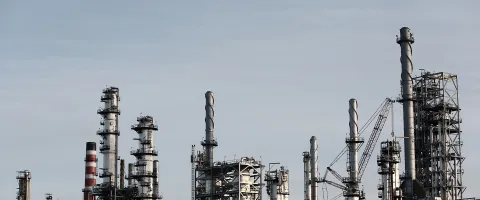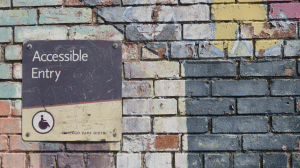On November 30th 2015, world leaders gathered for the UN Climate Conference, the goal being to pass the first global climate agreement. But today hosting a conference for 40.000 delegates, observers and members of the press from all over the world is expensive. In fact, it costs around 190 million US dollars. So where does that money come from?
- What is COP21?
- The UN- Framework Convention on Climate Change in Paris 2015, 21st Conference of the Parties.
To make it happen, a lot of sponsors were needed. But who in fact were these sponsors and is their over-arching behavior consistent with the ultimate values that should be at the core of such a conference? Let’s have a look at where the money comes from. More than 60 companies gave financial support to hold this conference – among these are some of the world`s biggest polluters including EDF, Engie and BNP Paribas.
A recently published study conducted by the French social research group BASIC and the Multinationals Observatory shows that only a few of the COP21 sponsors report their greenhouse gas (GHG) emissions in a proper, transparent way. The report analyzes the GHG emission reduction policies of ten COP21 sponsors: Accor, BNP Paribas, Carrefour, EDF, Engie, Kering, LVMH, L’Oréal, Micheline and Renault. Only one company, EDF, has actually reduced its overall carbon footprint in line with EU targets! As Olivier Petitjean of Multinational Observatory stated, there has been a growing trend to suggest that corporations have all the solutions to deal with the climate crisis, especially in the words of the French government.
Solution is the keyword. From December 4th to 10th, a free exhibition is being held at Le Grand Palais – the Solutions COP21. During the exhibition, companies present themselves and their projects surrounding climate issues. Most of these companies offer technology-based solutions on how to handle the climate change and its consequences. Among the list of corporations are the Coca-Cola Company, Renault-Nissan and Engie. Climate activists criticize that the companies fail to offer appropriate solutions to addressing the real reasons for climate change and the warming of the planet. Instead, they try to profit from the false solutions they are promoting (like fracking), which do not tackle the root causes of climate change. Activists labeled the Solutions COP21 as being a large greenwashing scheme and took action on Saturday. They denounced the false solutions peddled by industry through a creative act of disobedience.
COP21 Brandalism Campaign
It’s evident that real solutions are needed as an answer to climate change, solutions that take into account the actual causes of the global warming. A reduction of carbon dioxide in the form of a decarbonisation is the right answer.
But it wasn’t just outside the conference area that action against the false solutions took place. The Action ZeroBy2050 and the 1.5 Degree Action happened inside the COP area. In order to stop the debate about whether (due to weak INDC-Pledges) it can be considered a success if the Paris outcome achieves a limitation to 2°C, the young observers inside COP21 are trying to turn the angle of public perception.
The message is that 2°C is not a success. Increased ambition is crucial for the most vulnerable countries and the action aims to highlight this perspective. The most vulnerable countries, highly in danger of extreme heat and sea-level rise formed the international partnership Climate Vulnerable Forum (CVF) with 20 members from Africa, Asia, the Caribbean, Latin America and the Pacific – including countries like Afghanistan and Bangladesh as well as small island states as Kiribati and Vanuatu. After the CVF declared they would shift their economy towards complete decarbonisation by 2050, in order to carry their fair share of the mitigation-burden, the young environmental activists showed their support in the conference area. Equipped with two banners, a legal demonstration started on the inside and then sprawled outside.
The observers at the UNFCCC negotiations fulfill an important role of absorbing tendencies or ideas stemming from recent negotiations and boosting or opposing them by sharing through various media channels. In doing so, they become a powerful tool in supporting the vulnerable but poorly presented countries.
In this regard, the presence and actions of young NGOs are building short-term alliances with changing groups within the negotiations. In general, a lot of commonalities exist between AOSIS (Alliance of Small Island States), CVF and other groups of vulnerable or developing states. Lorentz Beckhardt, a German ARD journalist, recently confirmed that the protests led by external youth groups gained recognition inside the conference hall, spurring more ambitious countries to advocate for a 1.5 degree climate deal.
Yes, the UN climate conference is a big and complex political process, but could it be that high-level policy is not everything. Corporations are only part of the solution - and the solutions they present need align with a real commitment to decarbonization.
But if Paris has taught us anything, it’s that we can also be part of the solution. Whether through activism or our daily life-style choices.To lead the world on a green path, everyone needs to contribute and be part of the change we so desperately need.
About the Author:
Anna Braam (27) is a political scientist from Bremen, Germany. Since the last 6 months she has been working as UN youth delegate for the UN climate negotiations. She is a board member of the Foundation for the Rights of Future Generations and a member of the Youth Alliance for Future Energy. At COP21 she is focusing on intergenerational equity and decarbonisation.
Malte Kuhn is a 21 year old law student from Bonn, Germany. As a member of the Youth Alliance of Future Energy, he has been observing the climate negaotiations since 2012.
This article was originally published December 10th, 2015





